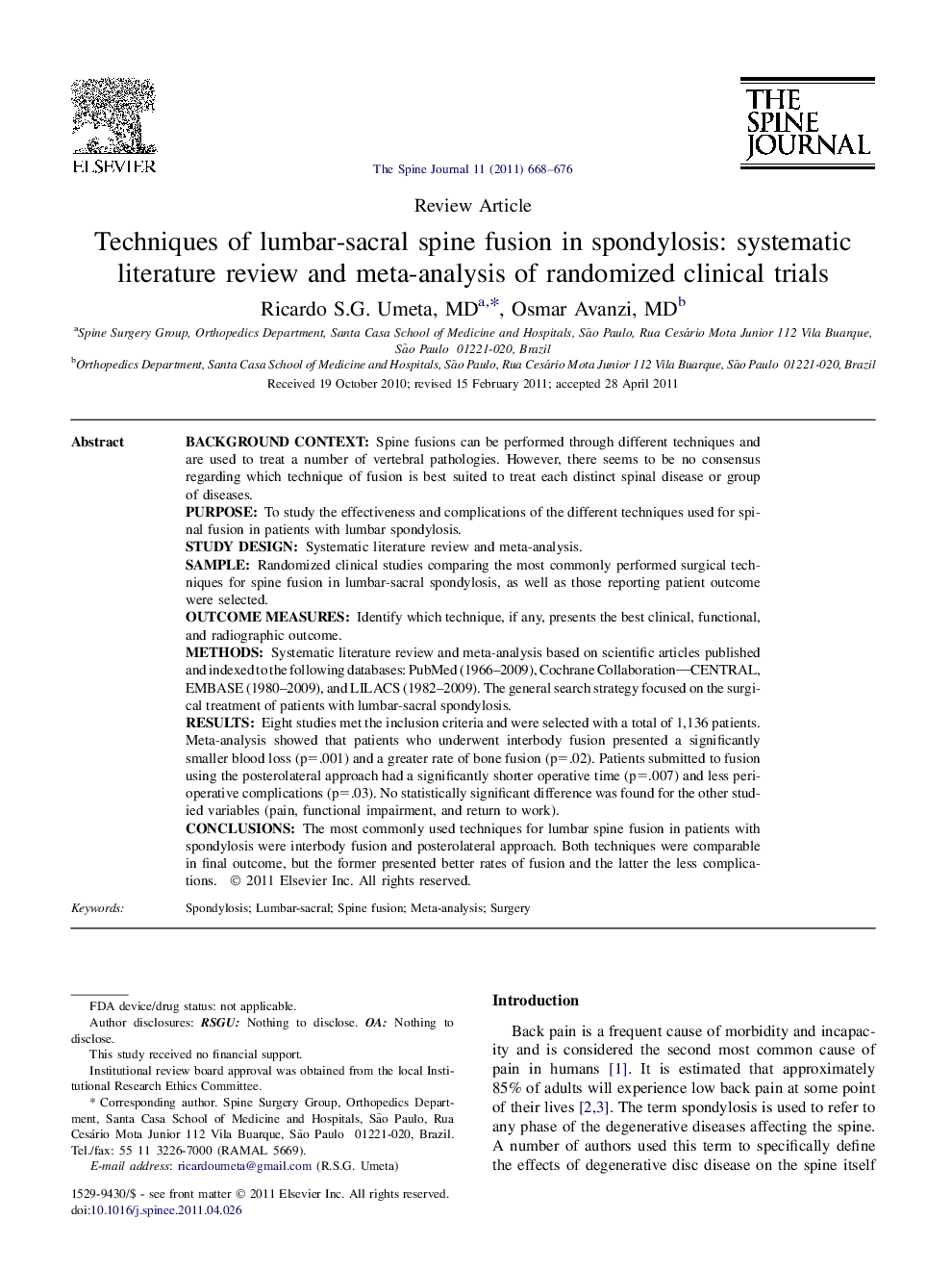| Article ID | Journal | Published Year | Pages | File Type |
|---|---|---|---|---|
| 4099099 | The Spine Journal | 2011 | 9 Pages |
Background contextSpine fusions can be performed through different techniques and are used to treat a number of vertebral pathologies. However, there seems to be no consensus regarding which technique of fusion is best suited to treat each distinct spinal disease or group of diseases.PurposeTo study the effectiveness and complications of the different techniques used for spinal fusion in patients with lumbar spondylosis.Study designSystematic literature review and meta-analysis.SampleRandomized clinical studies comparing the most commonly performed surgical techniques for spine fusion in lumbar-sacral spondylosis, as well as those reporting patient outcome were selected.Outcome measuresIdentify which technique, if any, presents the best clinical, functional, and radiographic outcome.MethodsSystematic literature review and meta-analysis based on scientific articles published and indexed to the following databases: PubMed (1966–2009), Cochrane Collaboration—CENTRAL, EMBASE (1980–2009), and LILACS (1982–2009). The general search strategy focused on the surgical treatment of patients with lumbar-sacral spondylosis.ResultsEight studies met the inclusion criteria and were selected with a total of 1,136 patients. Meta-analysis showed that patients who underwent interbody fusion presented a significantly smaller blood loss (p=.001) and a greater rate of bone fusion (p=.02). Patients submitted to fusion using the posterolateral approach had a significantly shorter operative time (p=.007) and less perioperative complications (p=.03). No statistically significant difference was found for the other studied variables (pain, functional impairment, and return to work).ConclusionsThe most commonly used techniques for lumbar spine fusion in patients with spondylosis were interbody fusion and posterolateral approach. Both techniques were comparable in final outcome, but the former presented better rates of fusion and the latter the less complications.
